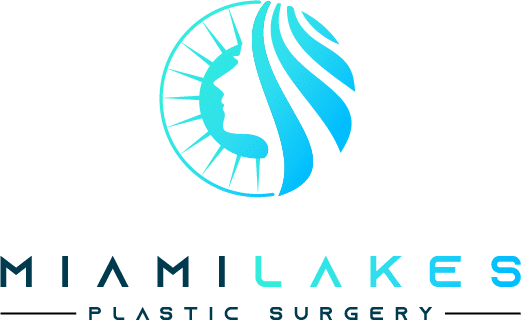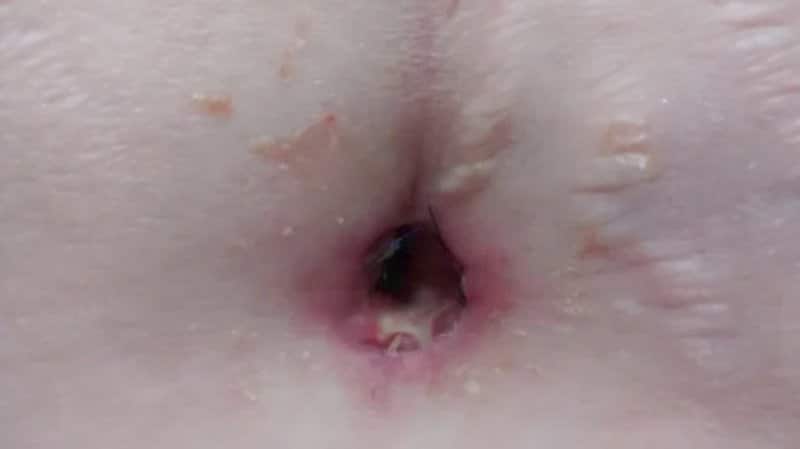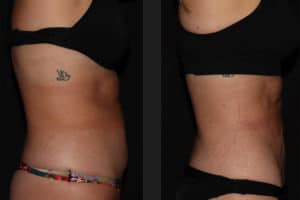Abdominoplasty, commonly known as the tummy tuck, is a cosmetic procedure that tightens the abdominal muscles by removing loose skin and excess fat deposits. The primary purpose of undergoing the tummy tuck procedure in Miami is to achieve a more contoured, flatter, and toned appearance.
The tummy tuck is a reliable procedure for women who have given birth to a child and want to restore their pre-pregnancy body appearance. The tummy tuck is also an effective surgery for people who want a flat and toned abdominal appearance.

People with skin problems caused by aging can also undergo a tummy tuck to resolve the loosening of skin. For most women, enhanced aesthetics and appearance are the primary reasons to choose and undergo tummy tuck surgery in Miami.
In addition, a tummy tuck can produce dramatic results by sculpting your body’s figure, allowing you to achieve your cosmetic goals and appear slimmer, smarter, and more feminine because you will have a flatter, firmer, and more beautiful abdomen.
Your abdominal area will become more proportionate to your natural body figure and weight. So, if you have saggy, loosened skin caused by pregnancy or childbirth, you can undergo a tummy tuck to restore your body’s appearance.
While tummy tuck in Miami is a safe procedure, it can cause infections in the belly button and surrounding areas. The primary reason for the infection is poor hygiene and less effective postoperative care. Today’s article will discuss this issue!
Why is the button infected after a tummy tuck?
During the tummy tuck procedure, the surgeon makes an incision in the lower abdomen to remove excessive fat and sew the loose muscles. Likewise, the surgeon makes an additional incision around the belly button.
The second incision aims to lift the remaining upper skin and align it with the rib cage while pulling it down like a window shade near the pubic bone. As a result, you will have stretched and tight skin.
Depending on your cosmetic requirements and safety, the surgeon will choose the best position to place your belly button’s stalk. The recovery time after the procedure depends on various factors, including your overall health status, weight, and age.
Some patients experience inflammation in the delimitated area characterized by tenderness, edema, erythema, and increased body temperature. Research shows that diabetes, malnutrition, and immunosuppressed states can also contribute to the risk of infections in the belly button.
Likewise, overweight and obese patients who undergo tummy tuck surgery have an increased risk of infections in the belly button. Some studies conclude that skin bacterial flora is one of the most significant causes of infection in the belly button after the tummy tuck surgery.
These bacteria include S. aureus, Streptococcus pyogenes, and Staphylococcus epidermidis. However, a few studies highlight that poor hygiene during the postoperative period can cause the accumulation of Enterococcus Faecalis and Escherichia Coli infections.
When you fail to follow the postoperative instructions, dirt, dust, fungus, bacteria, and other microorganisms accumulate inside your belly button. The area becomes favorable for microbes’ multiplication, causing a severe infection.
Signs of infected belly button after tummy tuck
The most common signs of belly button infection after tummy tuck is brown, yellow, white, or bloody discharge seeping out of your belly button. Another common sign of infection in the belly button during the recovery period is an unpleasant smell.
Moreover, you may develop a permanent scar near the lower abdomen or around the belly button. Although the scar improves over time, it does not fade completely. In some situations, the wound or scar appears wide and thick.
It is crucial to use a silicone scar cream based on your health provider’s instructions to reduce the risk of infections. Avoid getting a tattoo for at least six months to reduce the risk of complications.
If you notice your belly button appears open or constricted with frequent or infrequent discharge or pus, you may have developed an infection. Another sign of infection is a swollen belly button for a few weeks.
Call your health provider and seek immediate treatment if you feel the hardness in your belly button, the scar appears more prominent and visible, and more blood at the incision around your belly button.
How to treat infected belly button after tummy tuck
A tummy tuck is a highly reliable procedure and produces excellent results when you follow the postoperative instructions of your health provider. Your doctor will give a detailed plan on caring for your belly button after the procedure.
For instance, your health provider may ask you to clean the incision site with saltwater solutions or warm water. While your belly button may have slight inflammation after tummy tuck for a few weeks, it will disappear within six months as your belly button heals.
Besides, your surgeon will prescribe you antibiotics to deal with infections. Some surgeons administer intravenous antibiotics before the procedure to prevent the risk of infection in the belly button. It is crucial to apply Neosporin ointment to the incision site around your belly button at least two times a day for 2-5 days.
What to do Next?
Inflammation, swelling, and infections are common concerns with a tummy tuck. However, if the problem persists for a few weeks and you notice bloody, white, yellow discharge or pus, make sure you contact your health provider.
Overall, a tummy tuck is a reliable and safe procedure to achieve your cosmetic goals when you follow your surgeon’s postoperative guidelines. If you have saggy skin in the abdominal region, excess fat, and loosened tissues/muscles after pregnancy or childbirth, you can restore your pre-pregnancy appearance by undergoing tummy tuck surgery.
Miami Lakes Plastic Surgery Clinic has served hundreds of patients and helped them achieve their aesthetic goals. Whether you need more information on tummy tuck or want to undergo the procedure, call us today, and our professional team will guide you through the entire process.





